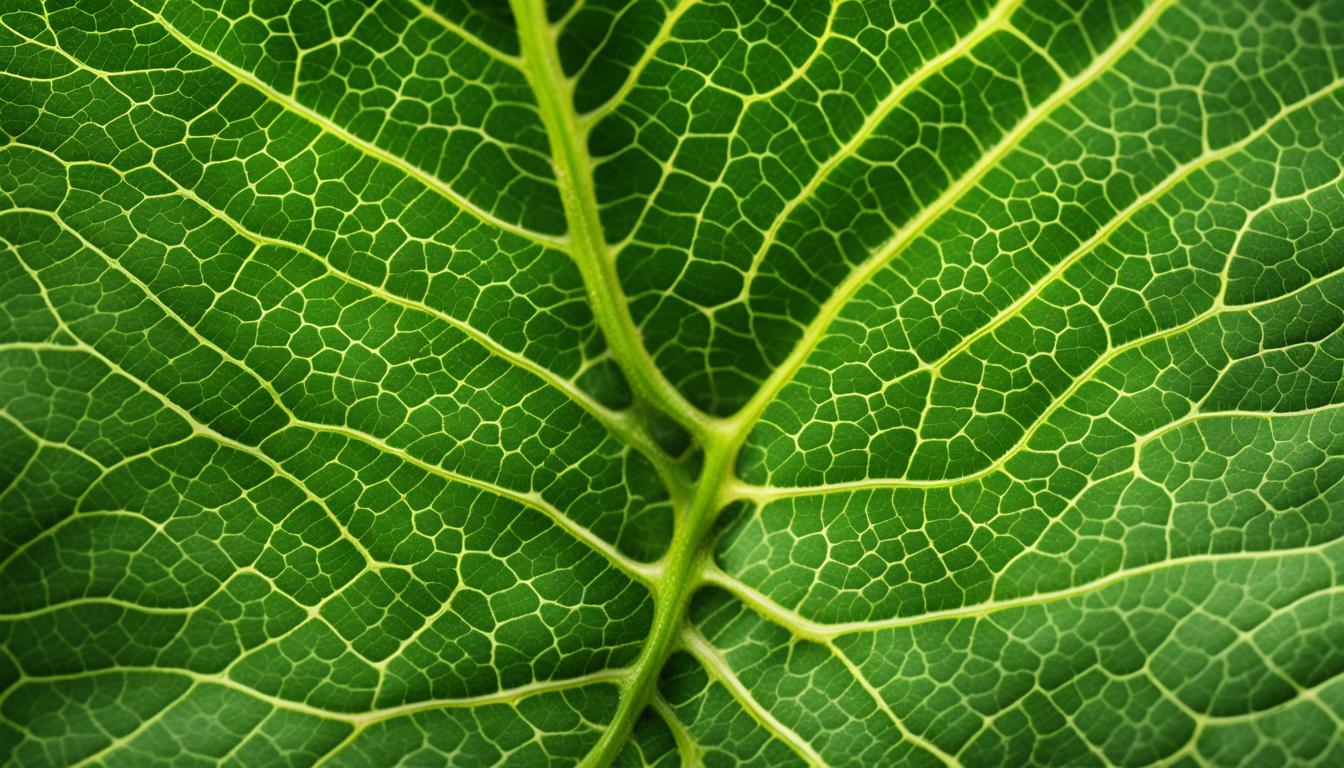
Are you worried about the health of your precious greenery? Well, you’ve come to the right place. In this comprehensive guide, I’ll walk you through the process of how to identify plant diseases.
By learning how to recognize the signs and symptoms of common plant diseases, you’ll be equipped with the knowledge to protect your garden and keep your plants thriving.
Key Takeaways:
- Recognizing the signs and symptoms of plant diseases is crucial for maintaining the health of your plants.
- Identifying plant diseases early on can help prevent further spread and protect your garden.
- By understanding the causes and symptoms of specific plant diseases, you can implement appropriate treatment and prevention measures.
- Regular observation and monitoring of your plants is essential for identifying and managing plant diseases effectively.
- Consulting with experts or using online resources can provide valuable guidance in the identification and management of plant diseases.
Anthracnose: Causes and Symptoms
Anthracnose is a common plant disease that affects various plants, causing dark, water-soaked lesions to develop on stems, leaves, or fruits. These lesions can lead to wilting, defoliation, and a decline in plant health. By recognizing the characteristic symptoms of anthracnose, such as dark spots and lesions, you can take appropriate measures to manage and control the disease.
One key symptom of anthracnose is the presence of dark, sunken spots on the plant. These spots are often surrounded by a reddish-brown border, and they can appear on any part of the plant, including the leaves, stems, and fruits.
The lesions may start out small and expand over time, eventually causing the affected tissue to decay. In severe cases, the plant may experience premature defoliation or even death.
Another telltale sign of anthracnose is the presence of fungal structures called acervuli. These are small, black, or brown structures that can be found within the lesions or on the surface of infected plant parts. Acervuli produce spores that are carried by wind or rain, leading to the spread of the disease to nearby plants.
To effectively manage anthracnose, it is important to promptly remove and destroy infected plant parts. Pruning affected branches and disposing of fallen leaves can help reduce the spread of the disease.
Practicing good sanitation, such as cleaning tools and equipment after use, can prevent the transmission of anthracnose between plants. Fungicidal sprays may also be used as a preventive measure or to control severe infestations.
Key Symptoms of Anthracnose:
- Dark, water-soaked lesions on the plant
- Reddish-brown border surrounding the lesions
- Fungal structures called acervuli
- Premature defoliation and wilting
Preventive Measures for Anthracnose:
- Remove and destroy infected plant parts
- Prune affected branches
- Dispose of fallen leaves
- Clean tools and equipment
- Apply fungicidal sprays as needed
| Plant | Common Symptoms | Preventive Measures |
|---|---|---|
| Tomatoes | Dark spots on fruits, stems, and leaves | Rotate crops, provide adequate spacing |
| Peppers | Lesions on stems, leaves, and fruits | Water plants at the base, avoid overhead irrigation |
| Apples | Dark spots on fruits and leaves | Prune trees for better air circulation |
| Beans | Anthracnose canker on stems | Plant resistant varieties |
Apple Scab: Recognizing and Treating this Common Disease

Apple scab is a plant disease that commonly affects apple trees and other fruit trees. It is characterized by the development of scabby spots on the fruits and leaves, which may have velvety spores in the center. Identifying these distinctive symptoms is crucial for effective treatment and prevention of apple scab in your orchard.
“The scabby spots on my apple tree leaves and fruits looked unsightly and were a cause for concern. After some research, I discovered that it was apple scab, a common disease that affects many apple trees.”
To effectively treat and prevent apple scab, it is important to implement proper management strategies. Here are some recommended steps:
- Prune infected branches: Remove any branches or twigs that show signs of scabby spots or lesions to prevent the disease from spreading.
- Improve air circulation: Trim nearby vegetation or structures that may obstruct airflow around the apple trees. Good air circulation helps to reduce humidity, which can contribute to the development of apple scab.
- Practice proper sanitation: Clean up fallen leaves and other plant debris that may harbor the fungal spores responsible for apple scab. Dispose of the debris away from the orchard or burn it to prevent further infection.
- Apply fungicides: In severe cases or for high-value apple trees, consider using fungicides labeled for apple scab control. Follow the instructions carefully and apply them at the recommended intervals to achieve the best results.
- Choose resistant apple varieties: When planting new apple trees, select varieties that have a high level of resistance to apple scab. These varieties are less likely to develop the disease and can help reduce the need for chemical treatments.
By implementing these measures and staying vigilant for any signs of apple scab, you can effectively manage and prevent the disease, ensuring the health and productivity of your apple orchard.
Bacterial Canker: A Threat to Stone Fruits
Stone fruits are a beloved addition to any garden or orchard, but they are not immune to diseases. One such disease that poses a significant threat to stone fruits is bacterial canker. Bacterial canker primarily affects cherries, peaches, plums, and other stone fruits, causing devastating damage if left untreated.
The symptoms of bacterial canker are distinctive and easily recognizable. Look out for sunken spots or lesions on the stems, branches, and fruit of the affected plants.
These lesions often ooze a sticky, gum-like substance, indicating a bacterial infection. As the disease progresses, the affected areas may become discolored and develop a dark, reddish appearance.
To effectively manage and control bacterial canker, it is crucial to take swift action. Pruning infected branches is a key step in preventing the spread of the disease. Cut at least 4-6 inches below the visible symptoms, ensuring that the pruners are disinfected between cuts to avoid further contamination.
In severe cases, it may be necessary to remove the entire infected tree to prevent the spread of the bacteria to neighboring plants. Implementing proper sanitation practices, such as regularly cleaning pruning tools and disposing of infected plant material, can also help reduce the risk of bacterial canker.
| Bacterial Canker Prevention and Management |
|---|
| Prune infected branches, cutting at least 4-6 inches below visible symptoms |
| Disinfect pruning tools between cuts to avoid spreading the bacteria |
| Remove severely infected trees to prevent the spread of the disease |
| Clean pruning tools and dispose of infected plant material regularly |
“Bacterial canker can have a devastating impact on stone fruit trees, but with prompt action and proper management practices, it can be controlled. Regular monitoring and early detection are key to preventing the spread of this destructive disease.” – Garden Expert
Bacterial canker is a serious threat to stone fruits, but by learning to identify the symptoms and implementing effective prevention and control measures, you can protect your valuable orchard.
Regularly inspect your plants for any signs of sunken spots or lesions and promptly prune infected branches to prevent further spread.
Remember to practice good sanitation by cleaning your tools and disposing of infected plant material. With vigilance and proper management, you can minimize the impact of bacterial canker and ensure the health and productivity of your stone fruit trees.
Black Knot: Identifying and Controlling this Fungal Disease
Black knot is a common fungal disease that affects various fruit trees, including plum, apricot, cherry, and chokecherry trees. It is caused by the pathogenic fungus Apiosporina morbosa and can lead to significant damage if left untreated.
By recognizing the characteristic symptoms of black knot and implementing appropriate control measures, you can prevent the spread of this disease and protect your valuable trees.
Black Knot Symptoms
One of the key identifiers of black knot is the presence of black, rough galls or growths on the branches and twigs of infected trees. These galls can vary in size and shape, but they are typically around 2 to 6 inches long and have a knotty appearance. As the disease progresses, the galls may become larger and more numerous, eventually causing distortion and weakening of the affected branches.
Black knot can cause foliage and fruiting abnormalities. Infected trees may experience defoliation, premature leaf drop, and reduced fruit production. It’s important to note that black knot can affect both fruiting and ornamental trees, so it’s crucial to be vigilant and proactive in your identification and control efforts.
Controlling Black Knot
Controlling black knot involves a combination of cultural practices and fungicide applications. Here are some recommended methods to manage this disease:
- Pruning: Remove and destroy any infected branches or twigs at least 4 to 6 inches below the visible knot. Make sure to sterilize your pruning tools with a disinfectant between cuts to prevent spreading the disease to healthy parts of the tree.
- Sanitation: Regularly monitor your trees for signs of black knot and promptly remove any galls or infected plant debris from the area. Proper disposal is essential to prevent the fungus from spreading to adjacent trees.
- Fungicide Treatment: Apply a fungicide specifically formulated for black knot control according to the manufacturer’s instructions. This should be done during the dormant season before bud break and repeated as necessary throughout the growing season.
Implementing these control measures in a timely manner can help minimize the impact of black knot on your fruit trees and maintain their overall health and productivity.
Remember, early detection and proactive management are key when it comes to black knot and other fungal diseases. By regularly inspecting your trees, practicing good sanitation, and taking appropriate control measures, you can keep this destructive disease at bay and enjoy a thriving orchard for years to come.
| Method | Description |
|---|---|
| Pruning | Remove and destroy infected branches/twigs |
| Sanitation | Remove galls and infected debris |
| Fungicide Treatment | Apply fungicide according to instructions |
Blossom End Rot: Understanding and Managing This Common Tomato Disease
Tomatoes are a popular choice for home gardeners, but they are susceptible to a variety of diseases. One common problem that tomato growers encounter is blossom end rot.
This frustrating condition can cause the bottom of the tomato fruit to develop a large, sunken, leathery spot, rendering it inedible. Understanding the causes and symptoms of blossom end rot is essential for effectively managing this plant disease.
The main culprit behind blossom end rot is a calcium imbalance in the plant. When there is a deficiency of available calcium, the developing fruit cannot properly take up this essential nutrient, resulting in the characteristic rotting of the blossom end.
While calcium deficiency is a primary factor, other contributing factors can include fluctuations in soil moisture, extreme heat, and improper fertilization.
To prevent and manage blossom end rot, there are several steps you can take. First and foremost, ensure that your soil has adequate calcium levels by conducting a soil test and amending with lime if necessary.
Maintaining consistent soil moisture is also crucial, as drastic fluctuations can hinder calcium uptake. Mulching around the plants can help regulate soil moisture levels. Avoid over-fertilizing with nitrogen-rich fertilizers, as they can interfere with calcium absorption.
| Symptoms | Prevention and Management | |
|---|---|---|
| 1 | The bottom end of the tomato fruit develops a large, sunken, leathery spot. | Conduct a soil test to ensure adequate calcium levels in the soil. Maintain consistent soil moisture by mulching around the plants. Avoid over-fertilizing with nitrogen-rich fertilizers. |
| 2 | Affected fruits are inedible and may eventually rot. | Regularly monitor soil moisture levels and adjust irrigation as needed. Apply a calcium-rich foliar spray to the plants. |
“Proper soil preparation and calcium management are key to preventing blossom end rot in tomatoes. By ensuring adequate calcium levels and maintaining consistent soil moisture, gardeners can enjoy a bountiful harvest of healthy, rot-free tomatoes.”
It is important to note that once blossom end rot appears on a tomato fruit, it cannot be reversed. By implementing preventative measures and managing the underlying causes, you can significantly reduce the incidence of this disease and enjoy a successful tomato harvest.

Brown Rot: Causes and Treatment
As a common and destructive plant disease, brown rot affects various stone fruits such as almonds, apricots, cherries, peaches, and plums. It poses a significant threat to fruit growers due to its ability to cause rotting and shriveling of the fruits, ultimately resulting in substantial economic losses. Recognizing the symptoms of brown rot is crucial in implementing effective treatment and control strategies.
Brown rot symptoms typically include shriveled and rotting fruits with a characteristic brown color. As the disease progresses, the infected fruits develop a fuzzy tan layer of spores, which facilitates the spread of the pathogen. The fungus responsible for brown rot can also infect blossoms and twigs, causing blighted flowers and dieback of shoots.
Preventing and managing brown rot requires a multifaceted approach. Cultural practices such as proper sanitation, pruning infected branches, and removing mummified fruits from the tree can help reduce disease incidence.
Fungicides can be applied during key developmental stages and in accordance with local regulations to effectively control brown rot. It is important to follow label instructions and consult with agricultural specialists for appropriate fungicide selection and application timing.
Comparison of Brown Rot Symptoms and Management Strategies
| Symptoms | Management Strategies |
|---|---|
| Shriveled and rotting fruits with brown color | Prune infected branches |
| Tan layer of spores on infected fruits | Remove mummified fruits |
| Blighted flowers and dieback of shoots | Apply fungicides during key developmental stages |
By promptly identifying the symptoms of brown rot and implementing appropriate management strategies, fruit growers can mitigate the impact of this destructive disease and safeguard their stone fruit crops.
Cedar Apple Rust: Recognizing and Preventing this Fungal Disease
As a garden enthusiast, I understand the importance of protecting my plants from fungal diseases. One common fungal disease that can wreak havoc on apple trees and other plants in the cedar family is cedar apple rust.
By familiarizing yourself with the symptoms of cedar apple rust and implementing preventative measures, you can ensure the health and vitality of your garden.
The symptoms of cedar apple rust are characterized by pale yellow, pinhead-sized spots that appear on the upper surface of the leaves shortly after bloom. These spots can gradually develop into small, orange-brown spore-filled structures known as telia.
Infected fruits may also exhibit raised, corky lesions. By identifying these distinct symptoms, you can take immediate action to prevent the spread of the disease.
To prevent cedar apple rust, it is essential to implement proper prevention strategies. First and foremost, consider planting resistant apple tree varieties, as they are less susceptible to the disease.
Prune infected branches promptly and remove nearby cedar trees, which act as alternate hosts for the fungus. By practicing good sanitation and ensuring proper air circulation around your apple trees, you can significantly reduce the risk of cedar apple rust.

Comparison of Cedar Apple Rust Prevention Measures
| Prevention Measure | Effectiveness | Implementation Difficulty |
|---|---|---|
| Planting resistant apple tree varieties | High | Easy |
| Prompt pruning of infected branches | Moderate | Moderate |
| Removing nearby cedar trees | High | Easy |
| Practicing good sanitation | Moderate | Moderate |
| Ensuring proper air circulation | Moderate | Moderate |
Implementing these preventative measures can significantly reduce the likelihood of cedar apple rust taking hold in your garden. By staying vigilant and taking proactive steps, you can protect your plants from the damaging effects of fungal diseases like cedar apple rust.
Club Root: Identifying and Managing this Cabbage Family Disease
I have experienced the detrimental effects of club root firsthand in my vegetable garden. Club root is a common plant disease that affects plants in the cabbage family, including cabbage, broccoli, and cauliflower.
It is caused by a soil-borne pathogen called Plasmodiophora brassicae, which infects the roots, leading to stunted growth, wilting, and yellowing of the leaves. Identifying the symptoms of club root is crucial for early detection and effective management.
The most characteristic symptom of club root is the formation of swollen, distorted roots, which resemble clubs or knobs. These swollen roots prevent the plants from taking up water and nutrients properly, resulting in poor growth and development.
Infected plants may also exhibit yellowing of the leaves, wilting, and a general decline in vigor. It is important to note that the severity of symptoms may vary depending on the plant species and the stage of infection.
Management Strategies for Club Root
Once club root is identified in the garden, it is essential to take immediate action to prevent its spread and minimize damage. Here are some strategies that have proven effective:
- Plant Resistant Varieties: Choose cabbage family varieties that are resistant to club root. These varieties have been bred to withstand the disease and can help reduce its impact on your crops.
- Practice Crop Rotation: Avoid planting cabbage family crops in the same area year after year. Rotate your crops with non-host plants to break the disease cycle and reduce the presence of club root spores in the soil.
- Improve Soil Drainage: Club root thrives in poorly drained soils. Amend your garden beds with organic matter, such as compost, to improve soil structure and water drainage. Raised beds can also help improve drainage.
- Sanitize Garden Tools and Equipment: Clean your garden tools and equipment after use to prevent the spread of club root spores. Wash them with a solution of bleach or disinfectant to kill any potential pathogens.
By implementing these management strategies, you can minimize the impact of club root on your cabbage family crops and maintain a healthy vegetable garden.
Corn Smut: Understanding and Dealing with this Unusual Fungal Disease
Corn smut is a fungal disease that commonly affects corn plants and can have a significant impact on crop yield and quality. It is caused by the fungus Ustilago maydis, which infects the developing kernels and causes large galls or tumors to form on the ears of corn.
These galls can range in size from small bumps to large, distorted growths that can reach up to 5 inches in diameter. The galls are usually grayish-black in color and are filled with thousands of fungal spores, which can easily spread to other plants.
The symptoms of corn smut can be visually striking, with the galls appearing as dark, bulbous growths on the corn ears. It is important to note that while corn smut may seem unsightly, it is actually edible and considered a delicacy in some cultures.
In fact, some culinary enthusiasts actively seek out corn smut for its unique flavor and culinary uses. Nevertheless, for commercial corn growers, corn smut can cause significant economic losses due to reduced yield, lower-quality corn, and increased costs associated with controlling the disease.
To manage the spread of corn smut, it is essential to implement appropriate control measures. This includes promptly removing and destroying infected plants to prevent the release of spores into the environment. Crop rotation is also recommended to minimize the risk of reinfection in subsequent growing seasons.
Practicing good sanitation, such as removing plant debris and maintaining proper weed control, can help reduce the chances of corn smut infection. Fungicides may also be used as a preventive measure, but their effectiveness may vary.
In summary, corn smut is an unusual fungal disease that can impact corn plants and pose challenges for growers. While it may have culinary value in some contexts, it can also cause significant economic losses. By understanding the symptoms and implementing appropriate management strategies, growers can effectively deal with corn smut and minimize its impact on their crops.
Crown Gall: Managing this Common Plant Disease
As a gardener, it’s important to be aware of common plant diseases that can affect your greenery. One such disease is crown gall, which can have a detrimental impact on woody shrubs and herbaceous plants.
Crown gall is caused by the bacterium Agrobacterium tumefaciens and is characterized by the formation of swollen galls on the stems and roots of infected plants. These galls hamper the plant’s ability to uptake nutrients and water, leading to stunted growth and decreased vigor.
To effectively manage crown gall, it’s crucial to be able to identify its symptoms. Look out for large, irregular galls on the affected plants, especially near the base of the stem or on the roots.
These galls can vary in size and may appear rough and woody. If you suspect crown gall in your garden, it’s important to take immediate action to prevent its spread to other plants.
One of the key management strategies for crown gall is the removal of infected plants. Carefully dig out and dispose of the affected plants, making sure to remove as much of the root system as possible. It’s also essential to practice proper sanitation to prevent the spread of the disease.
Clean pruning tools with a solution of bleach or rubbing alcohol after each use, and avoid planting susceptible plants in areas where crown gall has been present.
Promoting overall plant health can help prevent crown gall. Ensure your plants are well-nourished and properly watered, as healthy plants are more resistant to diseases. Planting resistant varieties can also be effective in preventing crown gall.
Consult with local nursery professionals or extension agents to identify and select cultivars that are less susceptible to this disease.
Management Strategies for Crown Gall
| Management Strategies | Description |
|---|---|
| Remove infected plants | Carefully dig out and dispose of plants showing symptoms of crown gall, including as much of the root system as possible. |
| Practice proper sanitation | Clean pruning tools with a solution of bleach or rubbing alcohol after each use to prevent the spread of the disease. |
| Promote overall plant health | Ensure plants are well-nourished and properly watered, as healthy plants are more resistant to diseases. |
| Plant resistant varieties | Select cultivars that are less susceptible to crown gall. Consult with local nursery professionals or extension agents for recommendations. |
Damping Off: Symptoms, Prevention, and Treatment
Hey there, fellow gardeners! Today, let’s talk about damping off, a common seedling disease that can be a real headache for us plant enthusiasts. Damping off occurs when old seeds are planted in cold and wet soil, and it’s further aggravated by poor drainage. The result? Wilting and damping of our precious seedlings.
But fear not! There are steps we can take to prevent damping off and save our seedlings from an unfortunate early demise. First and foremost, improving soil drainage is key. Make sure to choose well-draining soil and avoid overwatering. Moist, but not waterlogged, is the goal here.
Another handy trick is using sterile planting materials. Starting with clean pots, trays, and fresh seed starting mix can help reduce the chances of damping off. Sterilizing your equipment is also a good idea. I like to use a solution of one part bleach to nine parts water for this purpose – just be sure to rinse everything thoroughly before planting.
Lastly, in case you do notice symptoms of damping off, such as wilting or seedling collapse, quick action is necessary. Gently remove the affected seedlings, dispose of them away from your garden, and avoid overcrowding your remaining plants, as this can contribute to the spread of the disease.
After reading this, check out our other articles on:
- Your guide to Fungal Plant Infections: Causes and Treatments
- Effective Remedies for Yellow Leaves on Plants: Guide & Tips
FAQ
How can I identify plant diseases?
Identifying plant diseases involves recognizing the characteristic symptoms such as spots, lesions, galls, or wilting on the stems, leaves, fruits, or roots of a plant. By observing these signs, you can determine the specific disease and take appropriate measures for prevention and control.
Why is it important to identify plant diseases?
Identifying plant diseases is crucial for maintaining the health and vitality of your greenery. By recognizing the signs and symptoms of common plant diseases, you can take the necessary steps to prevent further spread and protect your garden from potential damage.
What are some common plant diseases?
Some common plant diseases include anthracnose, apple scab, bacterial canker, black knot, blossom end rot, brown rot, cedar apple rust, club root, corn smut, crown gall, and damping off. These diseases affect various plants and can cause significant harm if not managed properly.
How can I prevent the spread of plant diseases?
Preventing the spread of plant diseases involves implementing appropriate measures such as pruning infected branches, removing infected plants, practicing crop rotation, improving soil drainage, using sterile planting materials, and planting resistant varieties. These actions can help control the disease and protect your plants.
What should I do if I suspect my plants have a disease?
If you suspect your plants have a disease, it is important to take immediate action. Consult a plant disease expert or extension service for accurate diagnosis and guidance on the appropriate treatment methods. Prompt intervention can help prevent further damage and save your plants.


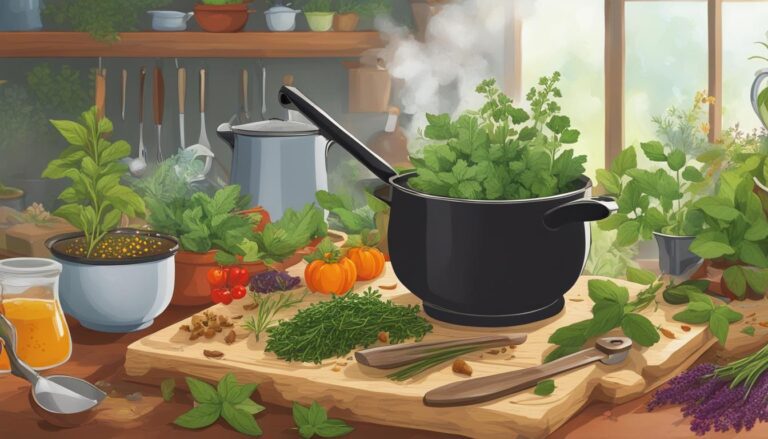
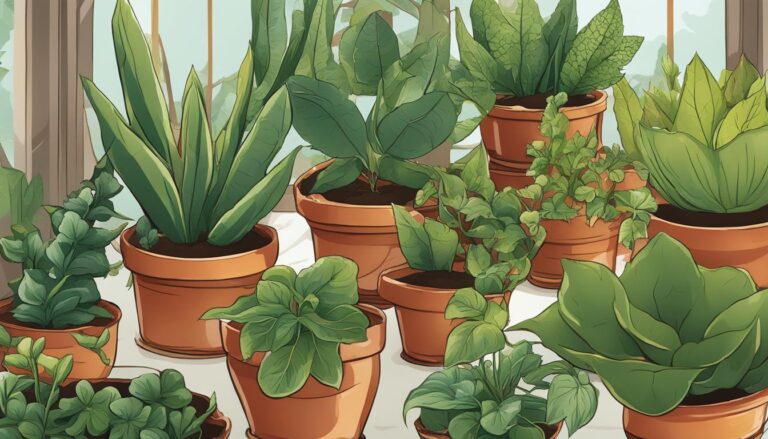

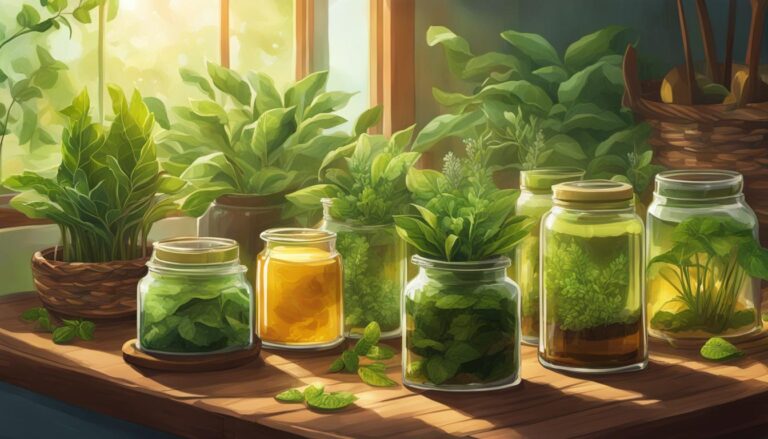
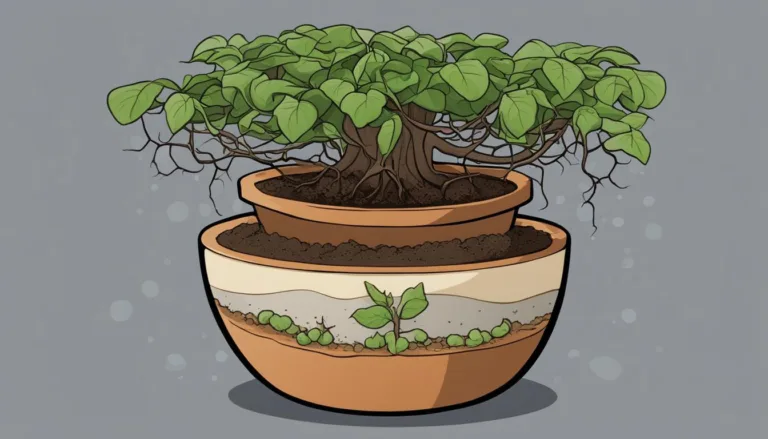
3 Comments